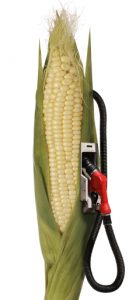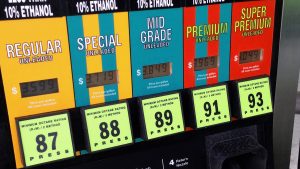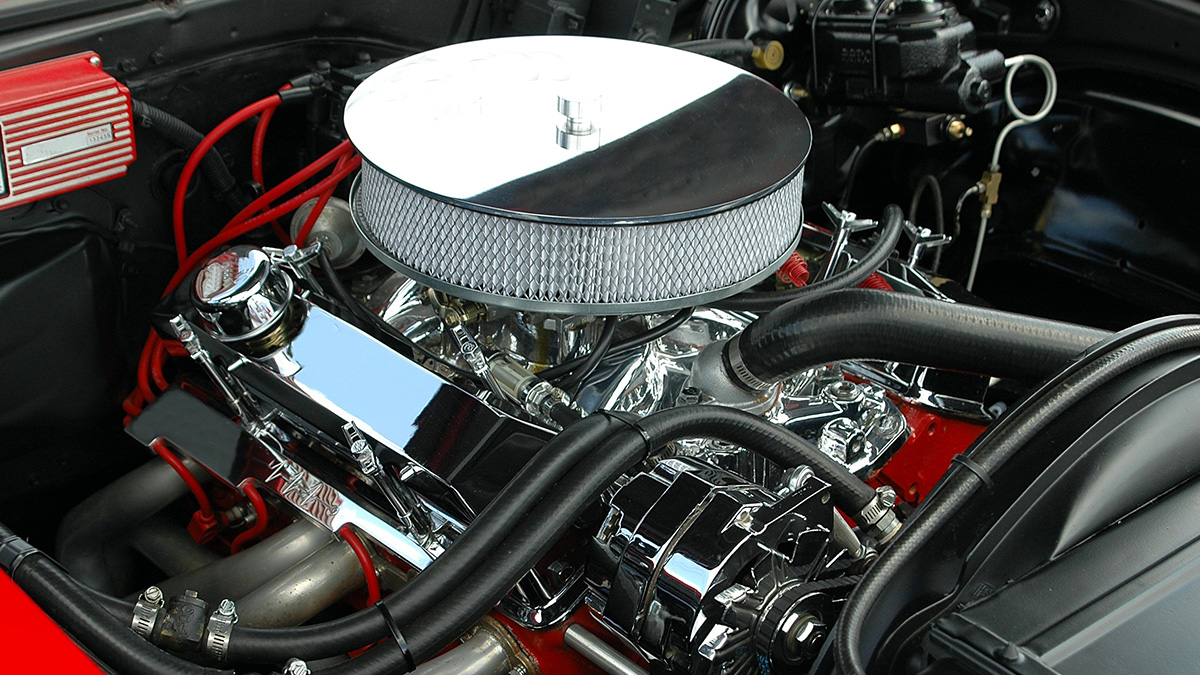The rush to replace fossil fuels with more renewable and planet-friendly energy has birthed new ideas and technologies. Flex fuel is one idea that gained substantial traction. A flex fuel vehicle (FFV) can burn traditional gasoline or fuels derived from plants that emit fewer emissions and greenhouse gasses during combustion. So, what exactly is flex fuel?
Flex fuel is a fuel made by combining gasoline and methanol or ethanol.
Flex fuel vehicles can operate on fuel commonly known as E85, a gasoline/ethanol blend that generally contains between 51% and 85% ethanol. The exact blend depends on the time of year and where you fill up.
Ethanol is close to grain alcohol. It burns cleaner and emits less carbon monoxide than gasoline. Ethanol burns more completely than gasoline, which reduces tailpipe emissions. Methanol, also known as wood alcohol, is the less popular of the two biofuel sources.
Flex fuel vehicles
Many owners don’t even realize they are driving an FFV because flex fuel vehicles can run on pure gasoline all the way up to E85 blends. These vehicles contain sensors that analyze the fuel in real time and adjust the injection and ignition timing accordingly.
Since ethanol absorbs water, FFV fuel systems are also designed to be more resistant to corrosion. Outside of these modifications, FFVs are identical to gasoline-only models.

Performance of FFVs
Generally, FFV performance doesn’t decline or increase when running E85 fuel.
A performance positive of flex fuel is that ethanol raises the octane level. Gasoline typically has an octane number between 84 and 93, while E85 is around 110. A higher octane means the fuel can withstand more compression before auto-igniting, which can cause engine knock and potentially damage the engine. However, a higher octane is not always better; make sure you use the fuel dictated by your owner’s manual.
A downside is that ethanol contains less energy per gallon than gasoline. E85 contains just 73% to 83% of the energy found in gasoline, meaning range and fuel economy decrease from its use. Fuel economy typically drops by 15% to 27% relative to regular gasoline. The upside is that ethanol typically costs less than gasoline and that may offset the decrease in mileage.
Finally, ethanol absorbs water and can cause corrosion inside the fuel system and engine’s top end. Ethanol problems are more pronounced in small engines, such as the one used to power your lawnmower or snowblower, since the fuel can sit for weeks or months before being burned.
It helps to use a fuel additive that combats ethanol corrosion. For example, AMSOIL Upper Cylinder Lubricant delivers lubricity improvers that help protect fuel injectors and other fuel-system components from wear. It also contains corrosion inhibitors that coat metal surfaces, block out moisture and stop deterioration before it starts.
Flex fuel history
In truth, FFVs are not even close to new. The Ford Model T came off assembly lines from 1908 to 1927 with carburetor jets that could be manually adjusted to work with gasoline, ethanol or a mix of the two.
Gasoline, diesel, alcohol, electricity and other fuels were all viable options in that era. But, eventually petroleum became dominant and has remained so ever since.
Diesel vs. Gas Engines: What’s the Difference? – AMSOIL Blog
Renewed interest in biofuels came in the aftermath of the 1973 oil crisis. That event spurred desire for national energy independence, and the idea of growing our fuel gained a foothold. Ethanol emerged as a standard alternative fuel due to its reduced toxicity, potentially greener production process and the might of the Iowa corn lobby.
Modern FFV technology was first introduced in 1994 with the Ford Taurus. By 2017 there were approximately 22 million FFVs on the road. The U.S. is the world’s largest ethanol producer at 16 billion gallons per year, nearly all of it made from corn. Together, the United States and Brazil produce 84% of the world’s ethanol.
Money matters
The cost of adding flex-fuel capability to a new vehicle is minimal and generally not passed on to the customer. Car manufacturers have gladly sold FFVs to help reach Corporate Average Fuel Economy (CAFE) standards. FFVs have also benefited from tax incentives that encourage adoption of alternative fuels.
The tax incentive has since expired and the number of FFV vehicles offered by car manufacturers has dropped like a rock.
The Department of Energy reports that there are still more than 22 million E85-compatible vehicles on the road, but the list of new models that are E85 compatible is growing short. A Renewable Fuels Association analysis revealed that all new 2021 cars are approved by vehicle manufacturers to use E15, but only two car makers, Ford and GM, are offering FFVs in their new models. Only 11 FFV models are available in 2021 compared to 80 models and eight manufacturers in 2015.
How green is it?
As we discussed, ethanol burns cleaner and emits fewer greenhouse gases than gasoline. Plus, since it’s made from plants, it’s a renewable energy source. For those reasons, flex fuel holds promise as a homegrown, environmentally friendly fuel source.
However, there are environmental drawbacks. Most ethanol produced in the U.S. comes from corn. Growing corn absorbs CO2, but most of the farmland producing fuel corn was already growing feed corn or other crops. Therefore, redirecting corn to make fuel has not changed the global CO2 uptake. The CO2 uptake would help offset the carbon released from vehicles if E85 could be economically produced from bio-waste like corn stalks or plants like switchgrass that can grow on low-quality land.
There are other environmental concerns as well. Corn consumes a lot of water that could be used for food production. Plus, converting corn to ethanol is energy intensive because the starches need to be broken down to produce sugars that can be distilled into alcohol.
For example, it takes about 30% more energy to produce ethanol from corn than it does from sugar cane, as it’s done in Brazil. Finally, using corn for fuel could potentially drive up the price of animal feed and ripple into grocery store prices.
How to ID an FFV
You could be driving a flex fuel vehicle already and not even know it.
Some Ford and GM vehicles have a badge that says “Flex Fuel E85 Ethanol,” or feature a leaf emblem, while other vehicles have labels on the fuel doors indicating they use flex fuel. A sure-fire method is to open the fuel door to check the color of the gas cap or capless filler neck. If it is yellow, your vehicle is an FFV. If you’re still unsure, pull out your owner’s manual for that information.
The future of flex fuel
Flex fuel seems to be in a precarious spot. Making it a viable biofuel requires automakers to manufacture vehicles that can use it and gas stations to have it available at the pump, neither of which are likely to happen without incentives.
At the same time, manufacturers seem to be pivoting to meet CAFE standards with hybrid and full-electric vehicles. Even the Renewable Fuels Association has switched its lobbying focus to increasing the regular gas blend from 10% to 15% ethanol.
In short, FFVs are on the ropes. But, all that said, the issue is not settled yet. Biofuels could play a role in the current push for carbon capture and reduction – and FFVs may just be the comeback kid once again.









Comments
Share: